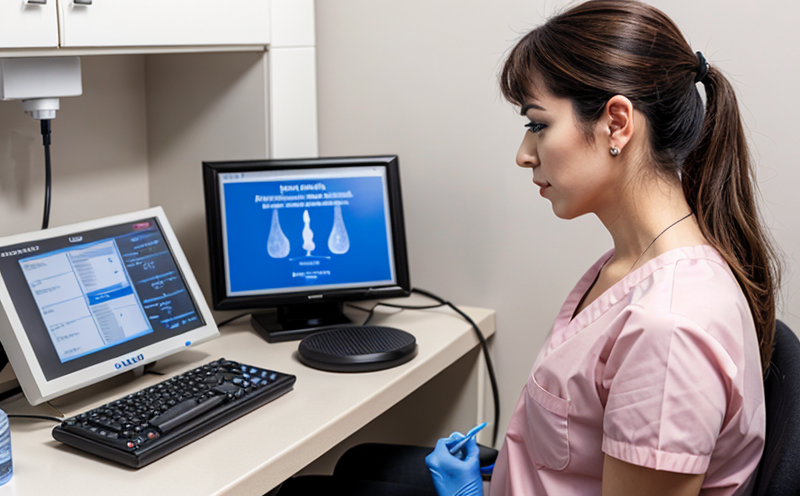Hormone Receptor Binding Testing in Environmental Studies
Hormone receptor binding testing is a critical tool used to assess the potential endocrine disrupting effects of chemicals and pollutants on the environment. This form of testing is particularly important for regulatory compliance, risk assessment, and environmental monitoring. The primary goal is to determine whether a substance can bind to hormone receptors in living organisms, which could lead to unintended physiological changes.
In environmental studies, this testing is crucial because many synthetic chemicals have the potential to interfere with natural hormonal balances. Such interference can disrupt normal growth and development, reproductive processes, and overall health of wildlife and human populations alike. Therefore, accurate and reliable hormone receptor binding testing plays a vital role in ensuring that products meet safety standards set by regulatory bodies like the U.S. Environmental Protection Agency (EPA) or similar organizations globally.
At Eurolab, we employ state-of-the-art equipment and methodologies to conduct these tests with precision and accuracy. Our team of experts ensures that all samples are handled according to strict protocols, from initial collection through final analysis. By doing so, we provide clients with actionable insights into the potential risks posed by various chemical compounds.
The importance of this type of testing cannot be overstated given its implications for public health and environmental protection. Regulatory requirements mandate compliance across industries such as pharmaceuticals, agriculture, manufacturing, and more. Compliance ensures that companies are not only meeting legal obligations but also contributing positively to sustainable development goals.
To better understand how hormone receptor binding tests work in practice, let's consider some key aspects of the process:
| Aspect | Description |
|---|---|
| Sampling | Environmental samples may include soil, water, air particulates, or even biotic matrices like plant tissues. |
| Extraction | Chemicals need to be extracted from the matrix using appropriate solvents and techniques before analysis. |
| Standardization | Calibration of equipment against known reference standards is essential for accurate measurements. |
| Assay Methods | The most common methods include competitive binding assays and radioligand assays. |
| Data Interpretation | Analyzing binding affinities helps determine if a compound is likely to exert hormonally active effects. |
| Reporting | Results are compiled into detailed reports that can inform decision-making processes related to product development or environmental policy. |
Why It Matters
Understanding the impact of hormone disrupting chemicals on ecosystems is essential for preserving biodiversity and maintaining ecological balance. Endocrine systems regulate numerous physiological processes, including metabolism, growth, reproduction, and behavior. Any disturbance in these systems can have far-reaching consequences.
For instance, studies have shown that certain pesticides and herbicides may mimic or block natural hormones like estrogen, thyroid hormone, or testosterone when they enter aquatic environments. Such interference can lead to feminization of male fish populations or reduced fertility rates in birds. These effects are not only detrimental to individual species but also threaten entire food chains.
In terrestrial settings, there is growing concern about the presence of endocrine disruptors in soil and groundwater supplies. Prolonged exposure could result in developmental abnormalities in offspring or increased susceptibility to diseases among adult populations. This underscores the need for robust testing protocols that can identify problematic substances early on.
Furthermore, understanding how different chemicals interact with hormone receptors allows researchers to design safer alternatives or develop mitigation strategies aimed at reducing contamination levels. By providing comprehensive data, Eurolab helps stakeholders make informed decisions regarding product formulations and waste management practices.
Eurolab Advantages
At Eurolab, we pride ourselves on delivering high-quality services tailored specifically to meet our clients' needs. Our expertise lies in providing precise measurements and reliable results using advanced technology combined with experienced personnel.
Our commitment extends beyond just meeting regulatory requirements; it includes exceeding expectations by offering unparalleled service and support throughout the entire project lifecycle. Whether you are conducting internal research or preparing for audits, our team is here to assist every step of the way.
With state-of-the-art facilities and cutting-edge equipment, Eurolab guarantees accuracy and consistency in all its analyses. Our rigorous quality control measures ensure that each result meets international standards such as ISO 17025 for laboratory accreditation. Additionally, we maintain close relationships with leading academic institutions and industry partners to stay at the forefront of scientific advancements.
By choosing Eurolab, you gain access not only to world-class facilities but also a team dedicated to excellence in every aspect of our work. Our goal is simple: to provide solutions that help clients achieve their objectives while contributing positively to global sustainability efforts.





